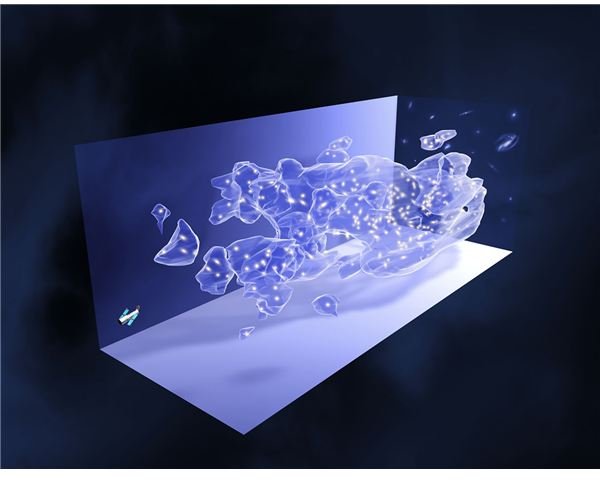What Difference Does Hot or Cold Dark Matter Make to Cosmology? An Explanation
Cosmology with Hot and Cold Dark Matter
Cosmology endeavors to understand the universe around us. Springing from the science of astronomy as humankind began to understand some of what they were seeing in the cosmos, cosmology focuses on the how the universe came to be and what its constituents are. From the big bang to present day, some physical processes shaped and formed everything we see when we peer into the cosmos. What processes were at work to form the galaxies, stars, planets, the matter we are made of, indeed, the very fabric of space itself? Cosmologists search to find the answers to these questions.
A fundamental challenge to cosmologists today is why does ordinary matter only make up a little over 4% of the material in the observable universe, with dark matter contributing about 23% and the mysterious dark energy comprising the last 72%? This dark matter is almost as elusive as the dark energy, but we do have some clues to what it may be as it reveals itself by indirect means through gravitational influences on normal matter. The current thinking is that it may come down to one of two types of dark matter: hot or cold.
What difference does hot or cold dark matter make to cosmology? Let’s find out.
What is Hot and Cold Dark Matter?
First we need to define these two key components:
- Hot Dark Matter (HDM): This is matter that moves at or near relativistic speeds and therefore possesses high energy. Because of this property it is more likely to be evenly distributed about the universe and less likely to clump together to form large structures like galaxies during the evolution of the universe.
- Cold Dark Matter (CDM): These particles travel at speeds much slower than relativistic speeds and therefore possess much lower energies. Because of this slower speed and their inherent high mass, these particles would have a tendency to attract each other and clump together, ultimately forming galaxy-sized objects.
The Matter of Whether it’s Hot or Cold Dark Matter.
Since dark matter does not emit electromagnetic energy that we can detect (hence the name dark matter) its existence is surmised by the gravitational influence it has on baryonic matter - protons and neutrons, the matter of the stuff around us. For example:
- Galaxies rotate faster than they should, given the amount of mass we can detect in them.
- Large galaxy surveys reveal that galaxies exist in superclusters, forming walls, filaments and bubbles stretching across vast regions of the cosmos.
- We see gravitational lensing by galaxy clusters that cannot be attributed to the mass of the visible material we observe.

Hot dark matter can, to a degree, account for these super-large structures, but cannot account for the formation of matter on a smaller scale, like galaxies. Neutrinos are a likely candidate particle for hot dark matter, because they have no mass, or a very small amount of rest mass. But, the neutrino is not massive enough, and at the time of the big bang, their high speed and high density—being the dominant particle of matter at that time—would have smoothed out matter fluctuations that would have led to the creation of galaxies as we see them today. This is called the “Top Down” model of the universe, where the smooth distribution of matter broke apart to form the objects we see today.
Cold dark matter provides a solution that appears to be a better fit to what we observe today, but it is not without its problems. The theoretical WIMP, or Weakly Interactive Massive Particle, that makes up CDM has yet to be discovered, but computer models based on CDM tend to display structures like we see in the cosmos. CDM is associated with the “Bottom Up” model of the universe, where small clumps of matter aggregated into the galaxies and clusters of galaxies we observe with our deep sky images and especially in the 2MASS and Hubble’s COSMOS surveys.
The Future of Understanding the Past
Some cosmologists are discussing the possibility it may be a combination of cold plus hot dark matter (CHDM) that explains the structure of the universe as we see it today, with the greater portion contributed by the CDM. By adding in a small amount of HDM with CDM, the distribution of these galaxy clusters and superclusters in the computer models provides a better fit with the observable data.
Hot or cold, it really doesn’t matter when you step back and think about dark matter as the scaffolding onto which the cosmos we observe is mounted.
References
https://astro.berkeley.edu/~mwhite/darkmatter/hdm.html
https://astro.berkeley.edu/~mwhite/darkmatter/dm.html
https://csep10.phys.utk.edu/astr162/lect/cosmology/darkmatter.html
https://map.gsfc.nasa.gov/universe/uni_matter.html
